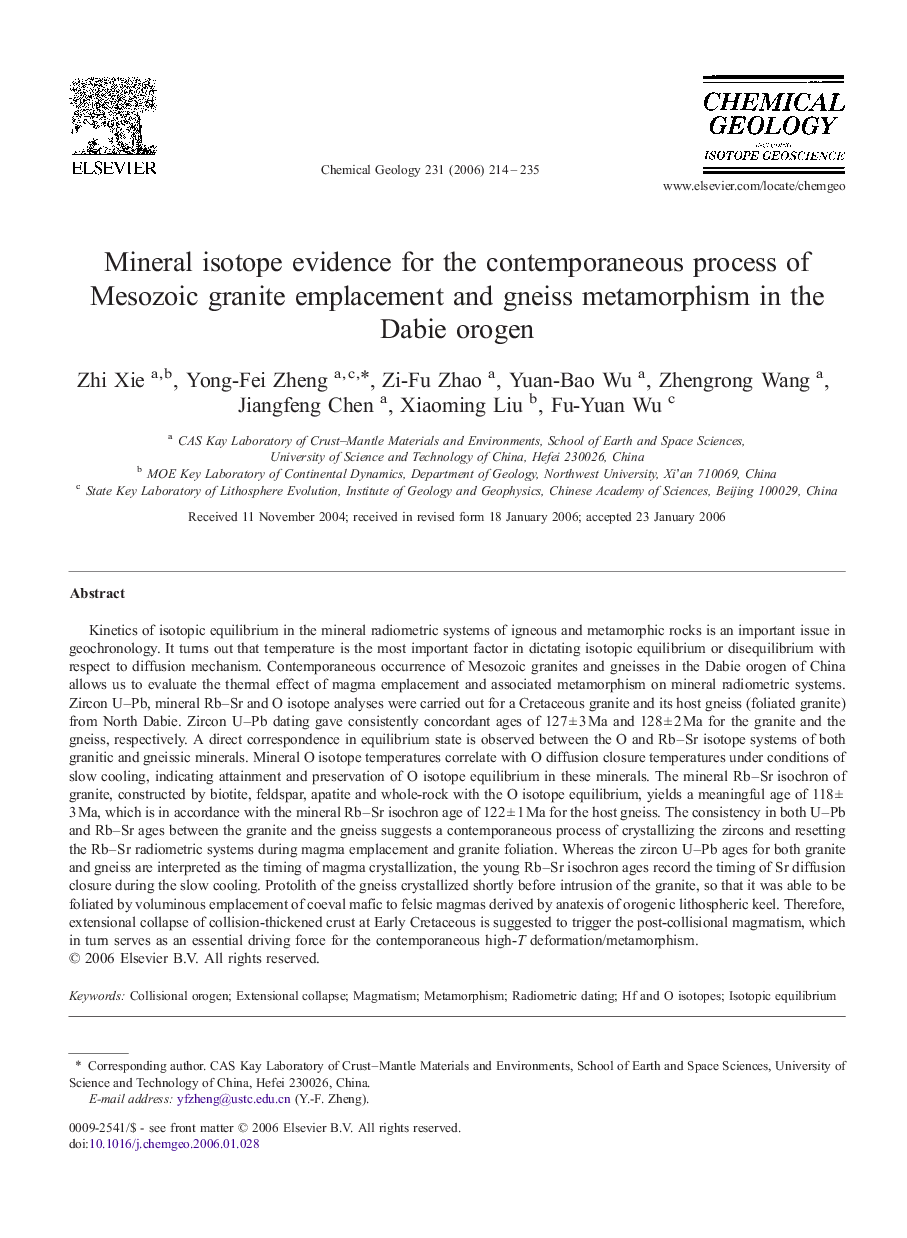| کد مقاله | کد نشریه | سال انتشار | مقاله انگلیسی | نسخه تمام متن |
|---|---|---|---|---|
| 4701420 | 1352261 | 2006 | 22 صفحه PDF | دانلود رایگان |

Kinetics of isotopic equilibrium in the mineral radiometric systems of igneous and metamorphic rocks is an important issue in geochronology. It turns out that temperature is the most important factor in dictating isotopic equilibrium or disequilibrium with respect to diffusion mechanism. Contemporaneous occurrence of Mesozoic granites and gneisses in the Dabie orogen of China allows us to evaluate the thermal effect of magma emplacement and associated metamorphism on mineral radiometric systems. Zircon U–Pb, mineral Rb–Sr and O isotope analyses were carried out for a Cretaceous granite and its host gneiss (foliated granite) from North Dabie. Zircon U–Pb dating gave consistently concordant ages of 127 ± 3 Ma and 128 ± 2 Ma for the granite and the gneiss, respectively. A direct correspondence in equilibrium state is observed between the O and Rb–Sr isotope systems of both granitic and gneissic minerals. Mineral O isotope temperatures correlate with O diffusion closure temperatures under conditions of slow cooling, indicating attainment and preservation of O isotope equilibrium in these minerals. The mineral Rb–Sr isochron of granite, constructed by biotite, feldspar, apatite and whole-rock with the O isotope equilibrium, yields a meaningful age of 118 ± 3 Ma, which is in accordance with the mineral Rb–Sr isochron age of 122 ± 1 Ma for the host gneiss. The consistency in both U–Pb and Rb–Sr ages between the granite and the gneiss suggests a contemporaneous process of crystallizing the zircons and resetting the Rb–Sr radiometric systems during magma emplacement and granite foliation. Whereas the zircon U–Pb ages for both granite and gneiss are interpreted as the timing of magma crystallization, the young Rb–Sr isochron ages record the timing of Sr diffusion closure during the slow cooling. Protolith of the gneiss crystallized shortly before intrusion of the granite, so that it was able to be foliated by voluminous emplacement of coeval mafic to felsic magmas derived by anatexis of orogenic lithospheric keel. Therefore, extensional collapse of collision-thickened crust at Early Cretaceous is suggested to trigger the post-collisional magmatism, which in turn serves as an essential driving force for the contemporaneous high-T deformation/metamorphism.
Journal: Chemical Geology - Volume 231, Issue 3, 30 July 2006, Pages 214–235